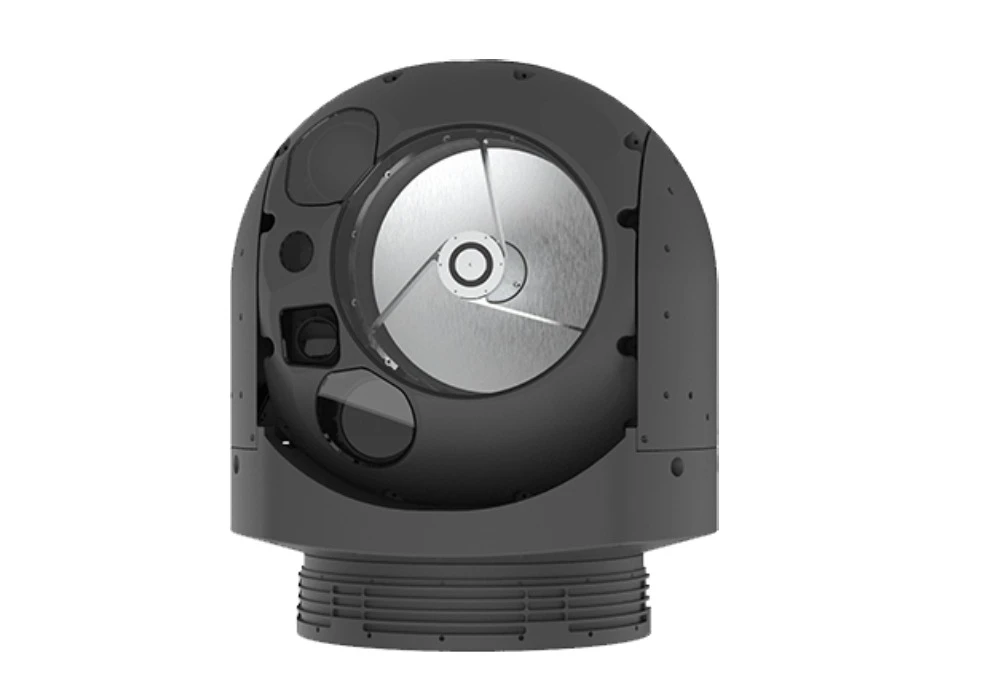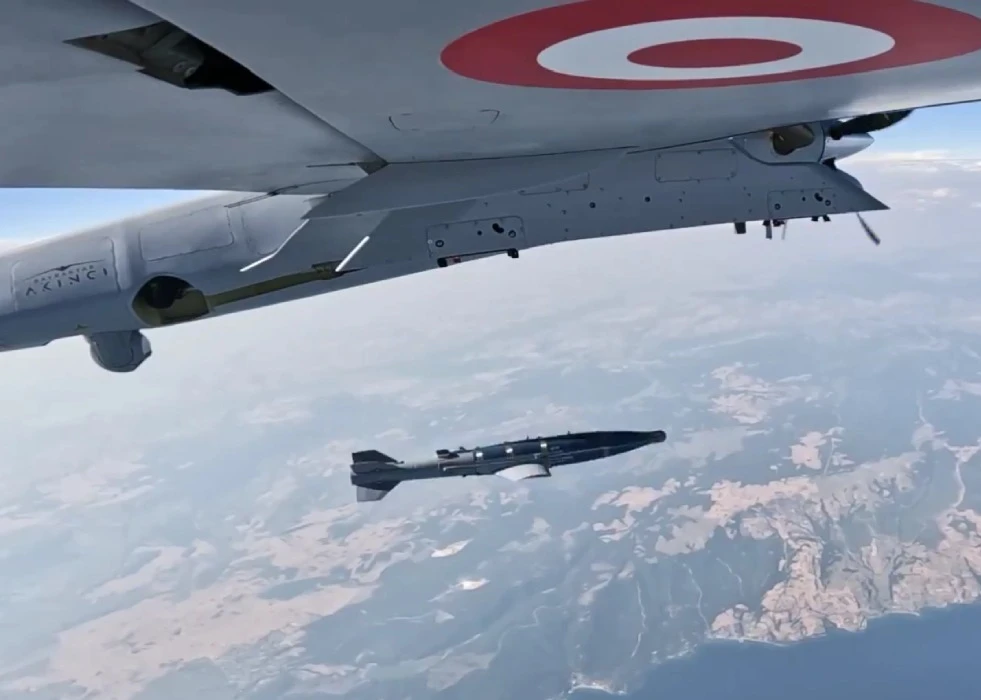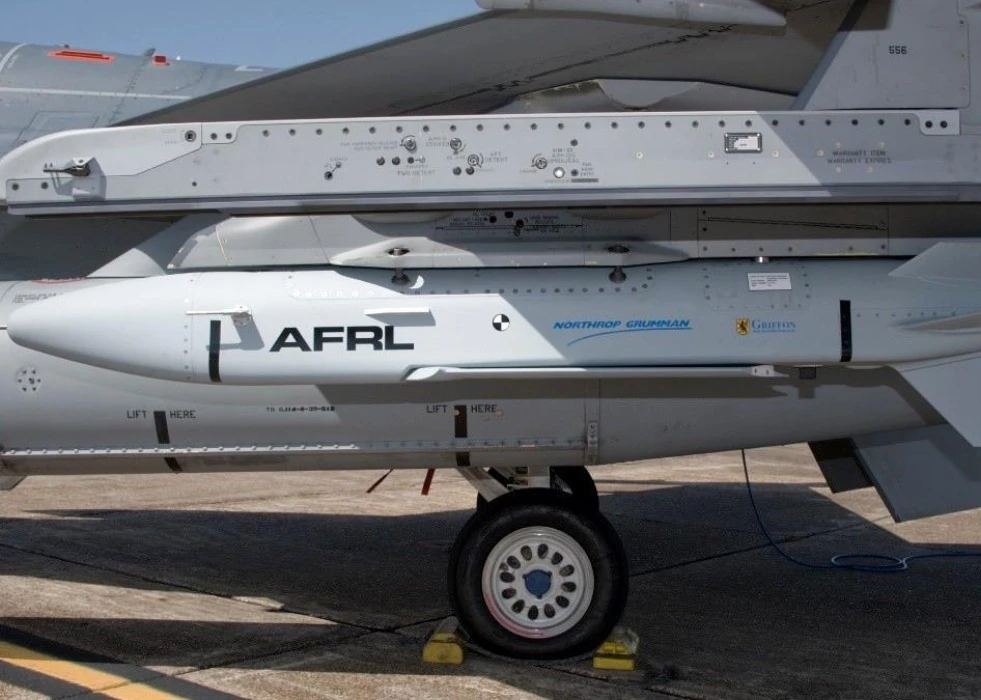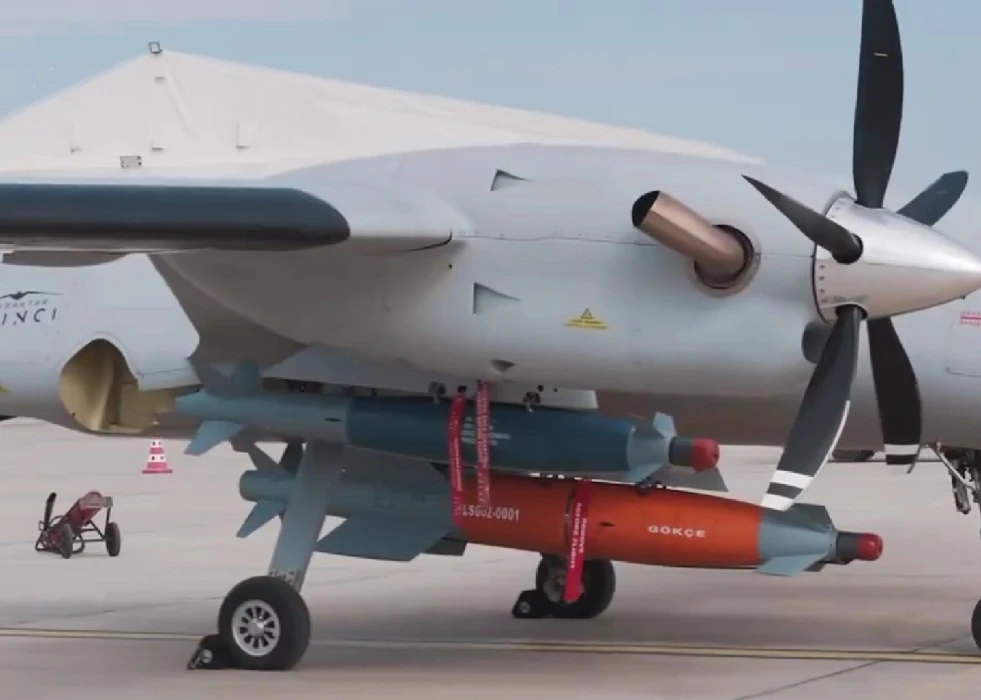ASELSAN’s ASELFLIR-500 electro-optical system onboard Bayraktar TB2 armed UCAV marked the targets for ROKETSAN’s MAM-L and CİRİT munitions.
MAM-L dropped from the Bayraktar TB2 armed UAV during the test and hit a moving practice target. Later in the test, a CİRİT 70 mm laser-guided missile launched from a KMC vehicle hit a static target.
MAM-L has demonstrated itself against moving targets in counter-terrorism operations and the Russo-Ukrainian War, where Ukraine hit small surface vessels of Russia using the munition.
Despite the unpowered munition, the potential to make sharper manoeuvres compared to its parent design, UMTAS ATGM, thanks to less weight, allows it to correct its course against small moving targets.
Earlier in 2024, MAM-T, the heavier member of the MAM family, dropped from an AKINCI UCAV and demonstrated a similar capability by hitting a moving sea target with target marking done by ASELFLIR-500.
CİRİT missile, which hit the static target, was guided to the target by Bayraktar TB2 to demonstrate a cooperative engagement capability. KMC system, currently used on FNSS’s KAPLAN STA weapons carrier and various Turkish USVs, can carry up to eight CİRİT missiles. Alternatively, UMTAS and UMTAS-GM ATGMs can be fired from KMC.
CİRİT is not ROKETSAN’s first land-based missile guided by target marking from a UAV. TRLG-230 laser-guided artillery rocket with a range of 70 km hit its target during tests and military exercises.
The cooperative capability between KMC-carrying platforms will be more important shortly with the integration of UMTAS-GM Block 1 missiles, which will have a range of 16 km when launched from land platforms. At these ranges, terrain or other obstructions can impact surface-based laser designation, while a UAV can fully make use of the electro-optic designation range.
ASELFLIR-500 Marks Target for MAM-L and CİRİT













